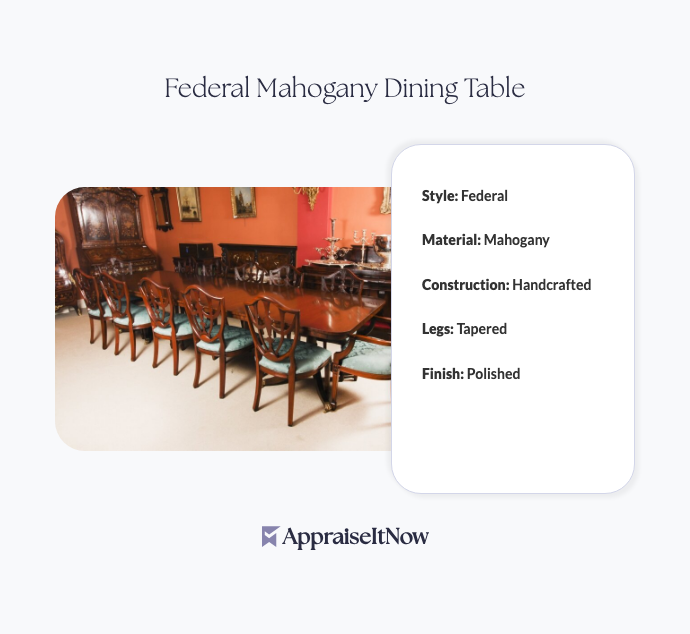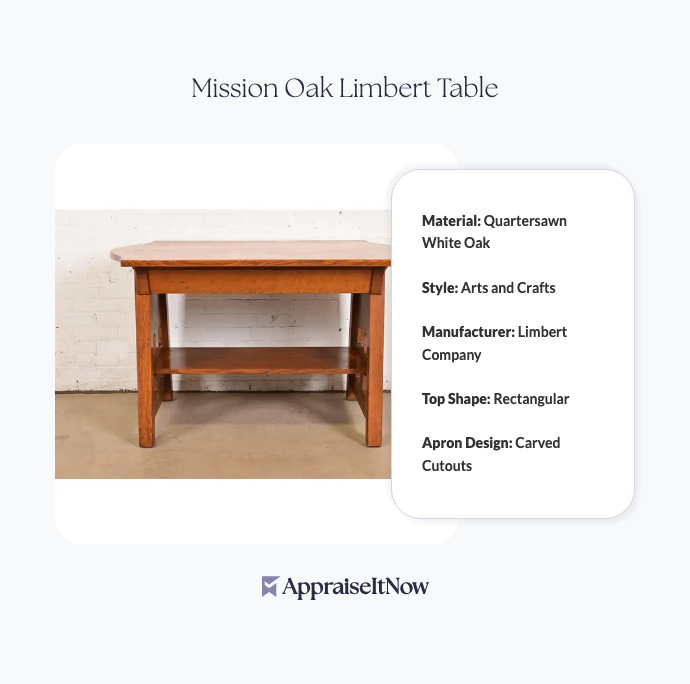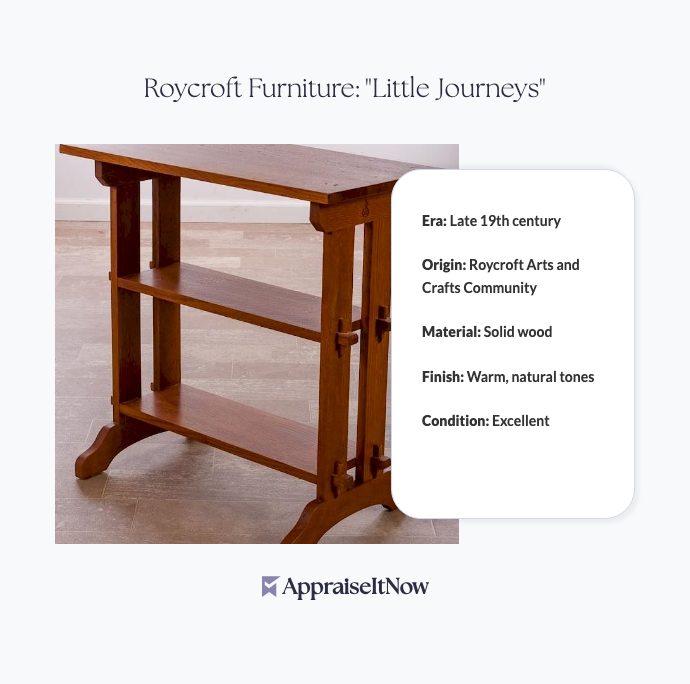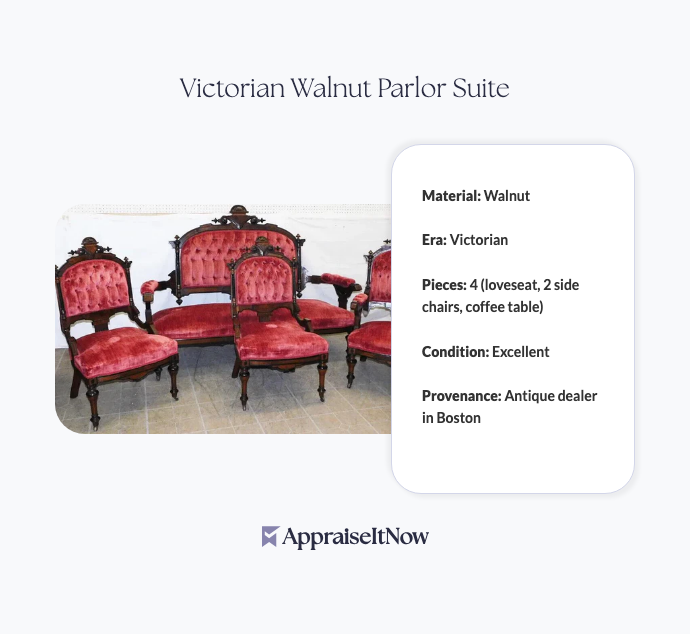<h1>How to Get Your Federal Mahogany Dining Table Appraised</h1>
<p>A Federal mahogany dining table represents more than just furniture—it's a piece of American history crafted with precision and care. If you own one of these elegant antiques, understanding its current market value through professional appraisal is essential, whether you're planning to sell, seeking insurance coverage, or simply curious about what you have. The good news is that these tables typically command strong prices in today's market, with estimated values ranging from <strong>$8,000 to $12,000</strong> for quality examples.</p>
<h2>What Makes Federal Mahogany Dining Tables Valuable</h2>
<p>Your Federal mahogany dining table's value stems from both its historical significance and exceptional craftsmanship. Introduced in the 1790s during America's Federal period, these tables represent a pivotal moment when American furniture design achieved sophistication rivaling European standards. The style flourished during a time of national pride and economic growth, and today's collectors actively seek authentic examples.</p>
<p>Is mahogany a high-end wood? Absolutely. Mahogany's warm reddish-brown hue, stability, and workability made it the wood of choice for finest American furniture. Your Federal table's solid mahogany construction provides durability that has allowed these pieces to survive 200+ years while maintaining structural integrity. The grain patterns and rich patina that develop over centuries become virtually impossible to replicate, adding authentic character that modern reproductions cannot match.</p>
<p>The Federal style itself incorporated design elements that elevate value beyond the material alone. Tapered legs that transition elegantly to the floor, delicate inlay details adorning the surface, and a graceful pedestal base all represent hallmarks of skilled craftsmanship. These features weren't merely decorative—they demonstrated the maker's technical ability and access to quality materials, both indicators of a table's original cost and current desirability among collectors.</p>
<h2>Identifying Your Table's Age and Authenticity</h2>
<p>Before seeking professional appraisal, understanding how to tell the age of a table helps you approach the valuation process with informed expectations. Federal pieces were produced primarily from 1790 to 1820, though reproductions and later interpretations continued for decades. How do I know if my dining table is vintage? Examine construction methods, wood type, hardware details, and finish characteristics.</p>
<p>Authentic Federal mahogany tables display construction techniques consistent with hand-craftsmanship of the period. Look for mortise-and-tenon joinery rather than modern fasteners, hand-planed surfaces with subtle irregularities, and period-appropriate hardware if original. The underside of your table reveals more than the top—original wood grain patterns, saw marks, and aging characteristics tell stories that cannot be faked.</p>
<p>To tell if real mahogany is in your table, examine the wood's color, weight, and grain structure. True mahogany has a distinctive warm tone that varies from lighter reddish-gold to deeper chocolate hues depending on geographic origin. It's considerably heavier than many domestic woods, and the grain displays characteristic patterns. When scratched slightly in inconspicuous areas, real mahogany shows consistent color throughout rather than different tones that suggest veneer over inferior wood.</p>
<div class="callout tip"><p><strong>Authentication Note</strong></p>
<p>Original finish, even with wear and patina, often indicates authenticity and can increase value compared to refinished examples. Professional appraisers examine these details using specialized knowledge developed through years of <a href="/blog/decoding-the-value-of-antique-furniture-materials-craftsmanship-and-historical-context">antique furniture evaluation</a>.</p></div>
<h2>Key Value Factors for Federal Mahogany Dining Tables</h2>
<p>When determining your table's specific position within the <strong>$8,000-$12,000</strong> range, several factors influence appraisal results. Size matters considerably—larger tables accommodating eight or more place settings command premiums over smaller four-to-six person versions, as they better suit modern entertaining needs. Condition ranks among the most critical elements; tables with original finish, minimal restoration, and structurally sound construction achieve top valuations.</p>
<p>Provenance documentation significantly impacts value. If your table's ownership history can be traced, particularly if it belonged to notable families or resided in significant homes, appraisers factor this into valuation. Even family histories and stories—documented through family records or local history resources—add credibility and appeal to collectors seeking tables with documented backgrounds.</p>
<p>The specific details of inlay work, leg design, and pedestal configuration matter tremendously. Tables featuring extensive satinwood or contrasting wood inlays demonstrate higher-level craftsmanship than those with simple geometric patterns. Legs with turned elements, fluting, or carved details suggest origin from skilled makers, potentially from established cabinet shops rather than rural craftspeople. The pedestal's design—whether featuring a simple shaft with spreading feet or more elaborate carved and reeded elements—affects desirability among contemporary collectors.</p>
<h2>Why Professional Appraisal Matters</h2>
<p>How do I find the value of an antique table? While online databases and auction catalogs offer reference points, professional appraisal provides crucial advantages. A certified appraiser brings expertise in identifying authentic Federal pieces versus later reproductions, understanding regional variations in craftsmanship, and knowing current market dynamics that online research cannot capture. AppraiseItNow connects you with credentialed furniture specialists holding designations from <strong>AAA, ISA, ASA, CAGA, and AMEA</strong>—organizations requiring rigorous training and adherence to professional standards.</p>
<p>Professional appraisers examine your table's construction, materials, condition, and documentation to provide <strong>USPAP-compliant valuations</strong> accepted by insurance companies, financial institutions, and courts. This documentation becomes essential when you need to adjust homeowner's insurance, establish estate values, or prepare for sale. Rather than guessing whether to list your table at $5,000 or $15,000, professional appraisal gives you confidence in your pricing decisions.</p>
<p>Is antique mahogany furniture valuable? When it's Federal period and properly authenticated, absolutely. The investment in professional appraisal typically costs a few hundred dollars but can clarify thousands in potential value. For high-quality Federal tables approaching the upper end of estimates, professional documentation often saves money by preventing underpricing or unrealistic expectations.</p>
<h2>Condition and Preservation Considerations</h2>
<p>Your Federal mahogany dining table's condition significantly affects its appraised value. Tables in excellent condition with minimal restoration command premium prices, while those requiring refinishing or structural repair fall toward the lower end of estimates. Understanding your table's current condition helps you set realistic expectations before appraisal.</p>
<p>Original finish, even with normal wear and light patina, preserves authenticity better than refinishing. Many collectors specifically seek tables with original surfaces because refinishing, while improving appearance, reduces historical integrity. Structural soundness matters equally—tables with loose joints, warped tops, or damaged pedestals require restoration that potential buyers factor into their offers.</p>
<p>The appraisal process includes detailed condition documentation photographing your table from multiple angles, highlighting any damage, repairs, or restoration work. This transparency helps potential buyers understand exactly what they're acquiring and allows insurance companies to accurately assess replacement costs. Tables with minor issues often still command solid values if the core piece remains sound and authentic.</p>
<h2>Market Trends and Selling Considerations</h2>
<p>How much should I sell a dining table for? The answer depends on condition, authentication, and local market demand. Current trends show strong interest in American period furniture from serious collectors and museum institutions. Federal mahogany dining tables have remained consistently desirable for decades, suggesting stable value retention and appreciation potential compared to many furniture categories.</p>
<p>If you're considering selling, professional appraisal provides critical information for positioning your table effectively. Auction houses, antique dealers, and private collectors each have different expectations and price ranges. Your appraiser can advise on optimal sales channels—whether consignment through established antique dealers, specialist auction houses, or direct private sales to collectors. This guidance often results in better outcomes than choosing sales channels based on guesswork.</p>
<div class="callout note"><p><strong>Market Insight</strong></p>
<p>Federal mahogany furniture has demonstrated consistent appreciation over the past two decades, with well-documented pieces appreciating 3-5% annually on average, making them solid alternative investments compared to many antiques.</p></div>
<p>How to sell a table fast? Professional appraisal documentation actually accelerates sales by establishing credibility and value. Serious buyers want assurance they're purchasing authentic Federal period pieces, and certified appraisals provide that confidence. Tables with clear provenance, condition documentation, and professional valuation attract qualified buyers willing to complete transactions promptly.</p>
<h2>Connecting With the Right Appraiser</h2>
<p>Getting accurate valuations requires working with specialists experienced in <a href="/blog/the-basics-of-antique-furniture-appraisal">antique furniture appraisal</a>. AppraiseItNow's platform connects you with credentialed experts across the United States who understand Federal period furniture's specific characteristics and market dynamics. You can submit photographs and descriptions securely online, allowing appraisers to conduct initial assessments before scheduling in-person evaluation if needed.</p>
<p>When selecting an appraiser, verify their credentials and experience specifically with Federal period furniture. Ask about their appraisal methodology and whether they're familiar with current market comparables for mahogany dining tables. The appraisal should include detailed photographs, condition assessment, historical context, and market analysis supporting the valuation—not simply a number without documentation.</p>
<p>Your appraiser should also address specific questions about your table's characteristics. Understanding what elements differentiate Federal mahogany tables—the inlay patterns, wood sourcing, construction techniques, and regional variations—demonstrates expertise you want working on your valuable piece. This specialized knowledge translates into more accurate valuations reflecting your table's true market position.</p>
<div class="callout tip"><p><strong>Professional Guidance</strong></p>
<p>Request appraisers who have conducted recent <a href="/blog/what-expertise-is-necessary-when-appraising-antique-furniture">antique furniture valuations</a> and can reference comparable sales from the past 12-24 months, ensuring valuations reflect current market conditions rather than outdated benchmarks.</p></div>
<h2>Documentation and Insurance Benefits</h2>
<p>Beyond determining your table's value for sale purposes, professional appraisal serves important insurance functions. If your Federal mahogany dining table is damaged or lost, insurance companies need documented evidence of its value and condition. Appraisal photos and detailed condition reports create an irreplaceable record should you ever need to file a claim.</p>
<p>Homeowner's insurance policies typically cover furniture as part of personal property, but coverage limits often prove insufficient for antique pieces worth $8,000-$12,000. A separate "scheduled personal property" endorsement can protect your table's full appraised value. Insurance companies require professional appraisals to justify higher coverage limits, making the appraisal an investment that potentially saves thousands in replacement costs.</p>
<p>For estate planning purposes, professional appraisals establish documented values for distribution to heirs or charitable donations. Tax professionals and estate attorneys rely on certified appraisals to substantiate values claimed for tax purposes. This documentation protects both your interests during your lifetime and your estate's interests after your passing.</p>
<hr />
<div class="callout note"><p><strong>Key Takeaway</strong></p>
<p>Your Federal mahogany dining table likely represents a significant asset worth $8,000-$12,000, and professional appraisal provides the accurate documentation, authentication, and market analysis essential for informed buying, selling, or insurance decisions. Through AppraiseItNow's platform, you can connect with credentialed furniture specialists who understand the nuanced factors affecting Federal period piece valuations, giving you confidence in your ownership, transactions, and protection strategies.</p></div>







.avif)







